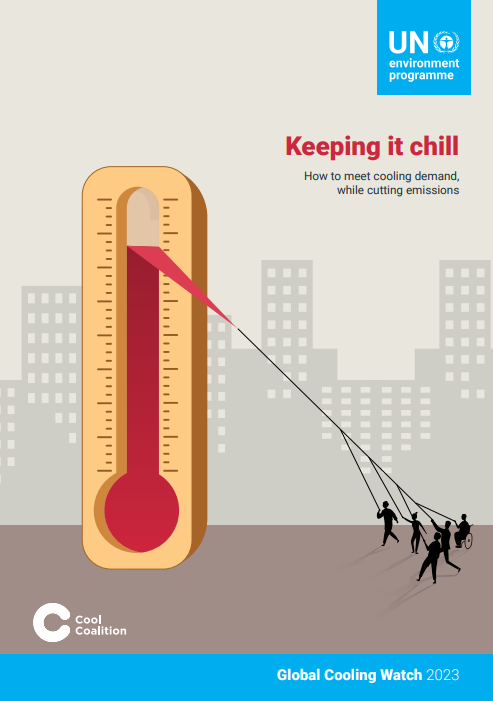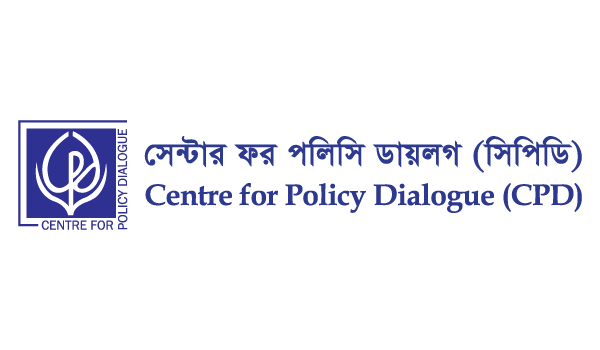The Global Cooling Watch 2023 report begins by emphasizing the necessity of increasing cooling demand while minimizing emissions. Moreover, it underscores the importance of striving towards near-zero emissions from cooling across various sectors and outlines how to achieve this. To facilitate this, the report advocates for sustainable cooling measures in three key areas: passive cooling, enhanced energy efficiency standards, and an expedited reduction of climate-warming refrigerants. Furthermore, it encourages nations to engage in international cooperation and knowledge sharing to effectively address the escalating cooling demand and enhance resilience. Ultimately, it is a powerful call to action, urging countries to adopt sustainable cooling measures and lower cooling-induced emissions.
Key Insights
Rising Cooling Demand
- Urbanization boom: As cities worldwide expand, the need for cooling in homes, offices, and public spaces is skyrocketing. This growth is remarkably rapid in developing countries, with regions like Asia experiencing a surge in air conditioner ownership.
- Climate woes: Rising global temperatures due to climate change further amplify the need for air conditioning, creating a vicious cycle where cooling contributes to the problem it’s trying to solve.
- Economic implications: The growing dependence on cooling has significant economic consequences, from rising energy bills to increased peak demand on electricity grids.
Emission Footprint
- Hidden warming force: It sheds light on the often-overlooked cooling sector’s substantial contribution to greenhouse gas emissions. This includes emissions from energy used to power cooling equipment, the production and leakage of refrigerants, and even the embodied carbon in building materials.
- Unchecked trajectory: If left unchecked, cooling sector emissions could reach 15% of global CO2 emissions by 2050, jeopardizing our ability to achieve Paris Agreement goals and limit global warming.
- Breaking the chain: Decarbonizing the cooling sector is crucial to mitigate climate change and prevent us from exceeding critical planetary boundaries.
Pathway to Sustainable Cooling
- The Passive Revolution: Champions passive cooling strategies like smart building design, natural ventilation, and shaded spaces. These approaches reduce energy consumption and create more comfortable and healthier environments.
- Technology Leap: Advancing technologies like high-efficiency air conditioners, heat pumps, and innovative cooling materials offer opportunities for significant emissions reductions. Investing in research and development of these technologies is critical to unlocking their full potential.
- Refrigerant Reform: Replacing potent HFC refrigerants with natural or low-global-warming-potential alternatives can dramatically reduce the sector’s carbon footprint. Phasing out HFCs under the Kigali Amendment offers a promising avenue for progress.
Policy Prescription
- Incentivize Change: Recommends financial incentives like tax breaks and subsidies to encourage investments in energy-efficient cooling technologies and sustainable building practices.
- Setting the Bar High: Implementing stricter energy efficiency standards for cooling equipment and appliances can drive manufacturers to innovate and consumers to choose greener options.
- Knowledge is Power: Public awareness campaigns and capacity-building programs can empower individuals and businesses to make informed choices and adopt sustainable cooling solutions.
Global Cooling Pledge
- Uniting for Impact: The launch of the Global Cooling Pledge, with over 60 countries committing to action on sustainable cooling, marks a significant step towards coordinated global efforts to tackle this sector’s emissions.
- Collaboration is Key: Sharing best practices, technology transfer, and financial support between developed and developing countries will ensure equitable access to sustainable cooling solutions.
- Keeping the Momentum: Continued advocacy, monitoring progress, and holding governments and businesses accountable are essential to ensure the pledge translates into tangible progress.
Overview
1. Cooling as a global challenge
Global cooling demand escalates due to rising temperatures, urbanization, and population growth. Moreover, it highlights the importance of cooling in preserving food safety, ensuring vaccine stability, and promoting productivity. However, it acknowledges its role in contributing to greenhouse gas emissions and climate change. Significantly, this section underscores the cooling sector’s pivotal role in advancing international climate-related agreements such as the Kigali Amendment and the Paris Agreement. Consequently, it stresses the immediate need for sustainable cooling practices.
In addition, the surge in cooling demand, propelled by elements like increasing temperatures and urbanization, presents a significant global challenge. Mainly, this demand influences electricity and refrigerant consumption and could escalate emissions if existing practices persist. Therefore, the pressing need for sustainable cooling practices to lessen environmental and societal impacts, contribute to climate change mitigation and guarantee equitable access to cooling is highlighted. Furthermore, international climate-related agreements are instrumental in promoting sustainable cooling, and concerted action at all governance levels is necessary.
2. The pathway to near-zero emissions from cooling
This section initially outlines the ambitious plan to achieve near-zero greenhouse gas (GHG) emissions from cooling by 2050. Importantly, it emphasizes that this goal is feasible by implementing “Best Cooling Measures” and rapidly decarbonizing the grid. Further, the pathway and critical steps to reaching near-zero GHG emissions from cooling are visually represented, effectively highlighting potential emission reductions from passive cooling, high energy efficiency gains, and swift hydrofluorocarbon (HFC) phase-down.
Moreover, it underscores the crucial need to address direct (refrigerant) and indirect (energy) emissions from the cooling sector. Ultimately, the section provides a thorough overview of the steps needed to shift towards sustainable cooling practices, achieve significant GHG emission reductions, and contribute robustly to global efforts to mitigate climate change.
3. Global cooling policy and legislative landscape
Provides an overview of global cooling policy and legislation, thereby underscoring the essential role of regulation in transitioning to sustainable cooling practices and reducing greenhouse gas emissions. This section presents the results of the Global Cooling Policy Stocktake survey, which looked deeply at sustainable cooling regulations in 193 countries. Specifically, it examined the status and implementation of critical regulatory measures, such as national cooling mandates, access to cooling, cold chains, energy-efficient cooling, building codes, refrigerants, and supporting policies. As a result, it stresses the need to track these regulations to refine data accuracy consistently.
4. Space cooling
It discusses space cooling, primarily used to ensure thermal comfort in buildings and vehicles. To begin with, it provides an overview of various cooling technologies, including room air conditioners, packaged units, chillers, and refrigeration systems. The importance of enhancing the efficiency of these cooling equipment is heavily emphasized.
Interestingly, this can be achieved through transformative emerging technologies such as advanced heat exchangers and variable-speed compressors, potentially minimizing high-impact global warming refrigerants. Moreover, the report brings passive cooling measures such as ventilation, radiative panels, and solar control techniques to light. Notably, these measures reduce the need for mechanical cooling and ensure thermal comfort.
5. Refrigeration and cold chains
The section primarily focuses on refrigeration and cold chains, emphasizing their crucial role in preserving the quality and safety of perishable goods from production to consumption. It provides a comprehensive overview of sustainable cold chains, notably highlighting their importance in environmentally friendly and economically viable management of global food systems while reducing waste and energy use.
The cold chain process has five stages: production, processing, storage, transportation, and consumption. Interestingly, it is emphasized that food cold chains account for roughly 4% of total global greenhouse gas emissions. Additionally, it explores various technological innovations in refrigeration and cold chains, such as pre-cooling, digitalization, and waste heat recovery. These technologies can potentially cut post-harvest losses and enhance energy efficiency.
6. Path towards low-emission refrigerants
This section delves into the shift towards alternative refrigerants and their life-cycle management. Firstly, it underlines the urgency of transitioning to alternative refrigerants with lower global warming potential (GWP) and notably points out their availability for diverse cooling uses. Furthermore, the section underscores the importance of enabling regulations, codes, standards, purchasing specifications, and training programs to ease the transition to low- or no-GWP refrigerants.
It also discusses the life-cycle management of refrigerants to prevent emissions throughout the cooling equipment’s life cycle, including during installation, operation, servicing, and end-of-life. In addition, it asserts that integrating the refrigerant transition with energy efficiency measures is crucial for maximizing synergies. Moreover, it stresses the need to fortify the Montreal Protocol to curb illegal refrigerant trade opportunities and hasten the phase-down of high-GWP refrigerants.
7. Financing for sustainable cooling
This section thoroughly examines the financial prospects of sustainable cooling initiatives. It highlights the necessity for various financial tools and investment paths to support sustainable cooling projects and products. Furthermore, it underscores the importance of using public and private funds, including grants, loans, risk-sharing tools, and technical assistance, to escalate investments in sustainable cooling.
It also covers the challenges of scarce reliable market data and funding shortfalls for sustainable cooling, underlining the urgent need for clarity to draw the necessary investments. It discusses the role of multilateral development banks in financing sustainable cooling and the requirement for robust risk management frameworks to evaluate cooling investment risks. Moreover, it stresses the importance of systematically tracking cooling finance and integrating sustainable cooling into environmental, social, and governance (ESG) safeguards for multilateral development banks.
8. Recommended steps to support the Best Policies pathway
It provides an in-depth outline of policy actions to transition to sustainable cooling practices. It stresses the urgent need for a comprehensive cooling policy framework that acknowledges cooling emissions and their specific impact on countries’ Nationally Determined Contributions (NDCs) under the Paris Agreement.
Secondly, it underscores the significance of enhancing and enforcing building energy codes specifically for passive cooling. Concurrently, it addresses the crucial need to build industry confidence, skills, and capacity to implement passive cooling on a larger scale. Additionally, it advocates for developing standards for essential passive cooling technologies and materials.
Furthermore, the section highlights the necessity of fast-tracking the phase-down of high-GWP refrigerants. It suggests moving towards electric vehicles and actively decarbonizing the electricity grid. It also emphasizes the pivotal role of public procurement policies and guidelines for low-GWP and high-efficiency cooling technologies. Lastly, it advocates for enhancing public financing for self-built homes to incorporate passive cooling beyond building energy code standards. It also emphasizes removing barriers to the energy service company (ESCO) market.




